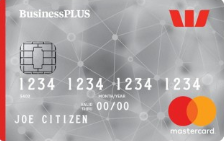
ASB Visa Business Rewards
Interest Rate Purchases
19.95%
Balance Transfer
0.00% first 6mths
Annual Account Fee
$35 every 6mos
Interest Free Days
Up to 50 days
Spend $100 = TR $1 or Spend $50 = 1c off per/L AA Smartfuel
Balance Transfer
0.00% first 6mths
Interest Rate Cash Advance
22.95%%
Overseas Travel Insurance
Minimum Credit Limit
$1000 per account
Joint Or Additional Cards Fee
$10 per Additional Card
Foreign Currency Purchases
Payment Type
Apple Pay, Google Pay, Fitbit Pay, Garmin Pay and ASB Paytag
Other

Westpac BusinessPLUS Mastercard with hotpoints
Interest Rate Purchases
20.95%
Balance Transfer
5.95% p.a.
Annual Account Fee
$50 every 6mos
Interest Free Days
55 days
Earn 1.25 hotpoints per $1 eligible business spend | Up to 90 days Purchase protection
Balance Transfer
5.95% p.a.
Interest Rate Cash Advance
22.95%%
Overseas Travel Insurance
Upt to 35 days
Minimum Credit Limit
Joint Or Additional Cards Fee
$25 per card
Foreign Currency Purchases
2.50% of transaction amount
Payment Type
Apple Pay and Westpac Pay
Other

Westpac Airpoints Business Mastercard
Interest Rate Purchases
20.95%
Balance Transfer
5.95% p.a.
Annual Account Fee
$72.50 every 6mos
Interest Free Days
44 days
Earn 1 Status Point per $225 eligible purchases | Earn 1 Airpoints Dollar per $85 eligible business spend
Balance Transfer
5.95% p.a.
Interest Rate Cash Advance
22.95%%
Overseas Travel Insurance
Upt to 35 days
Minimum Credit Limit
Joint Or Additional Cards Fee
$25 per card
Foreign Currency Purchases
2.50% of transaction amount
Payment Type
Apple Pay and Westpac Pay
Other






